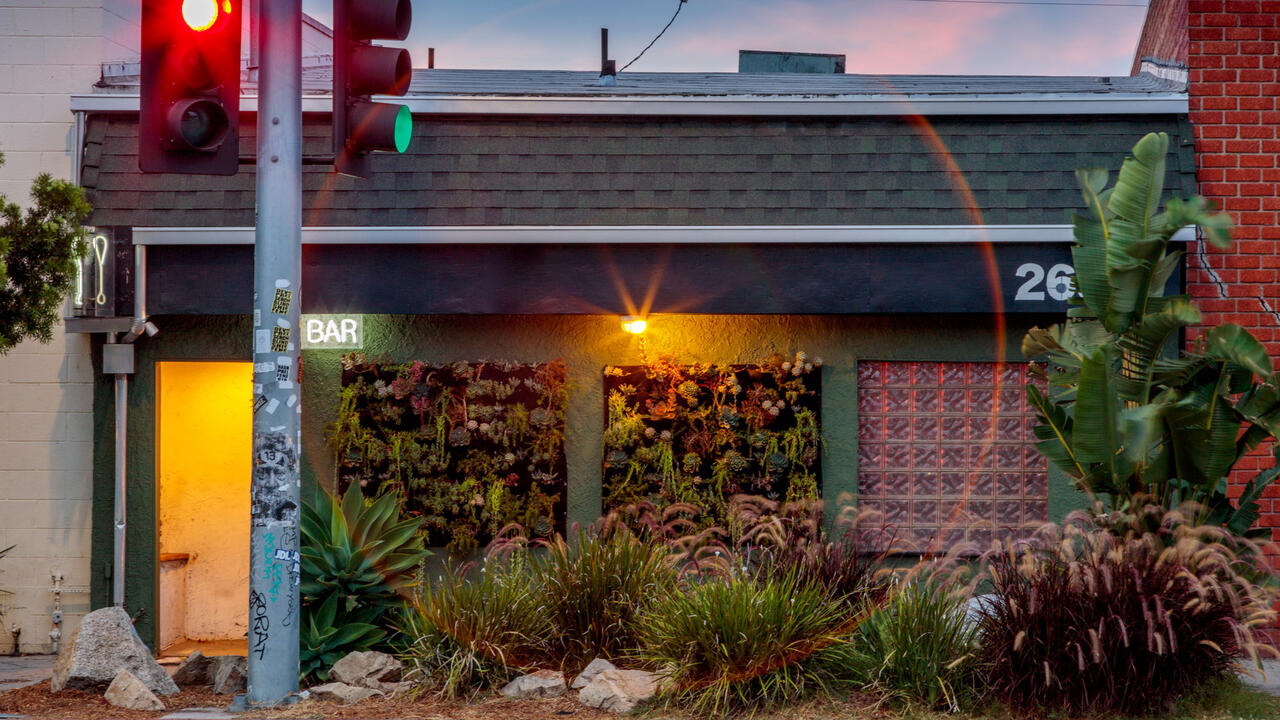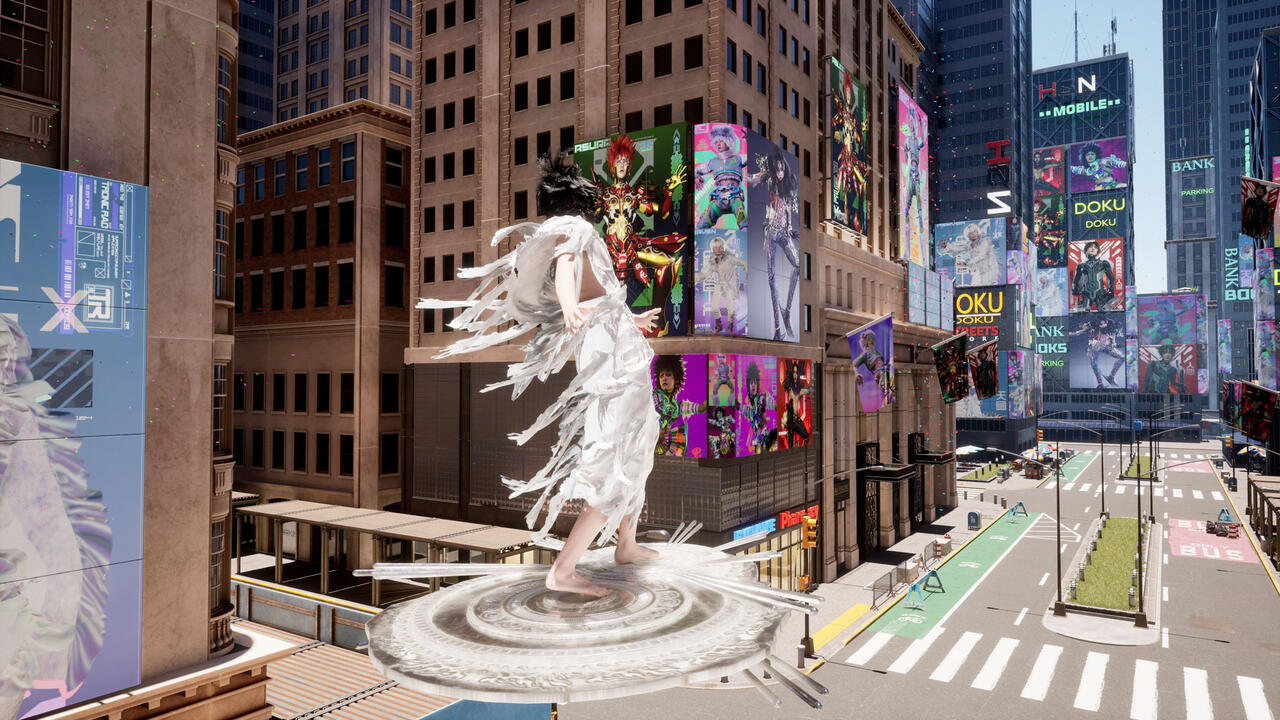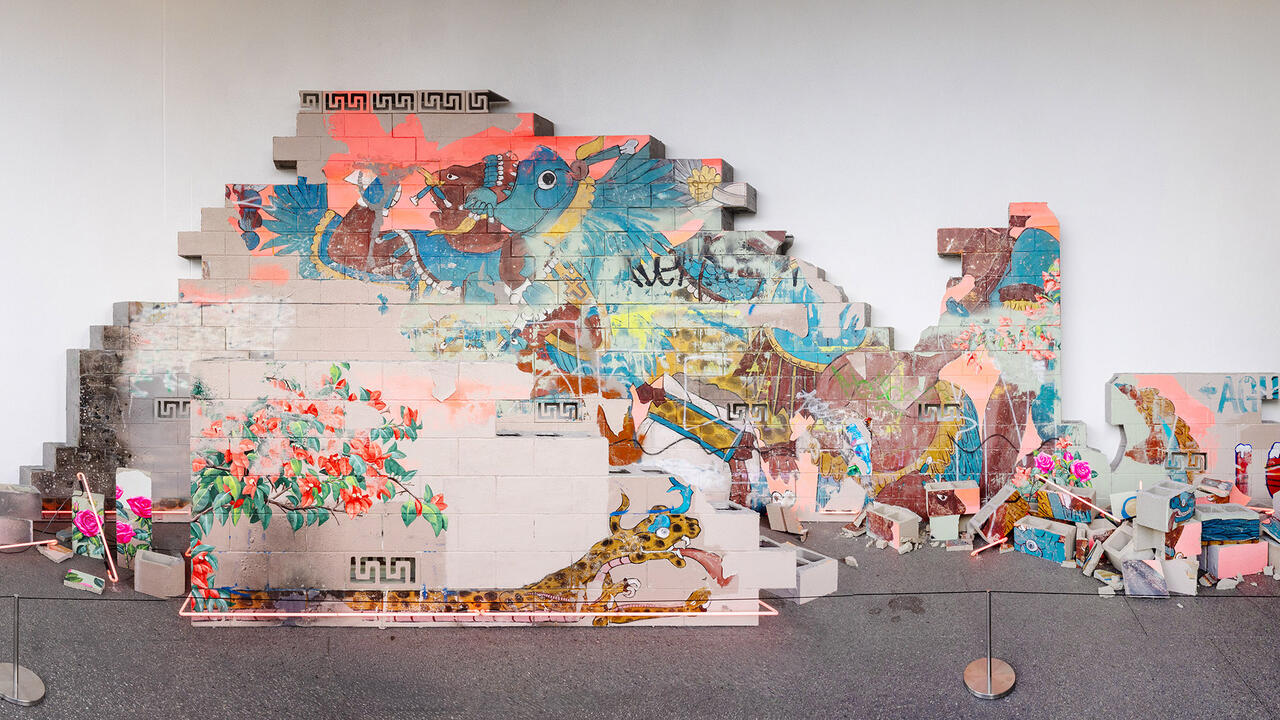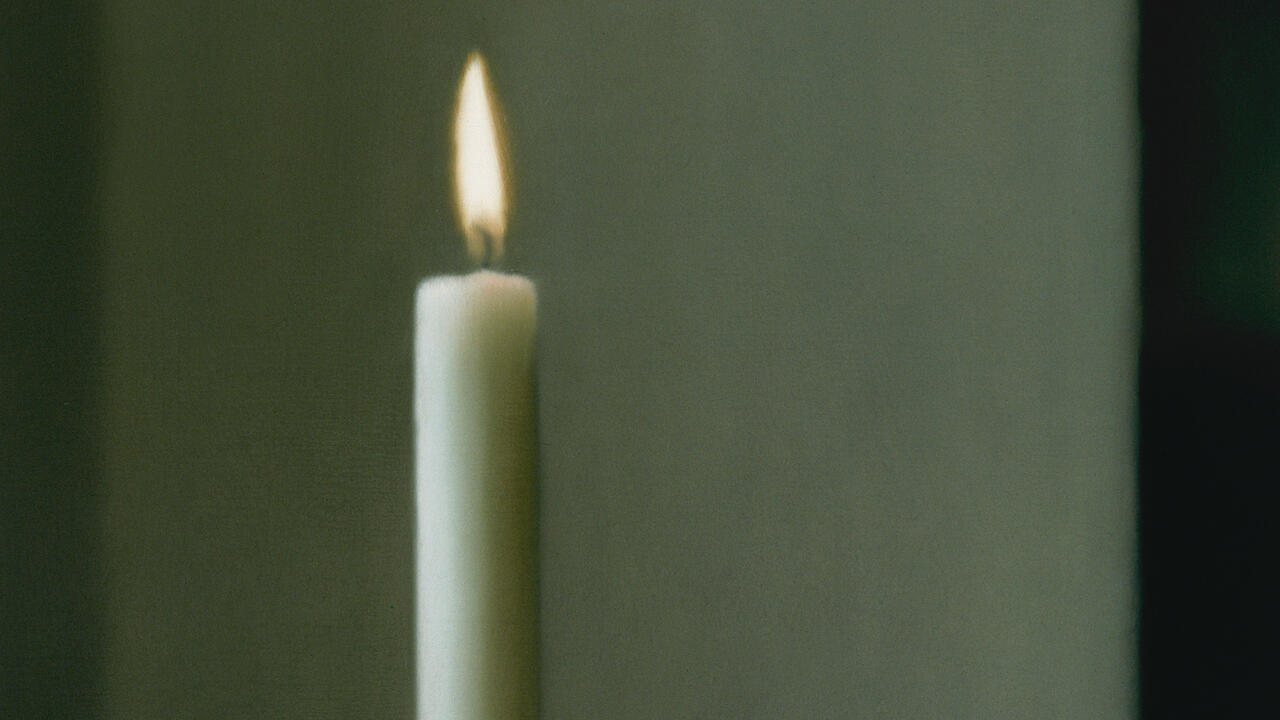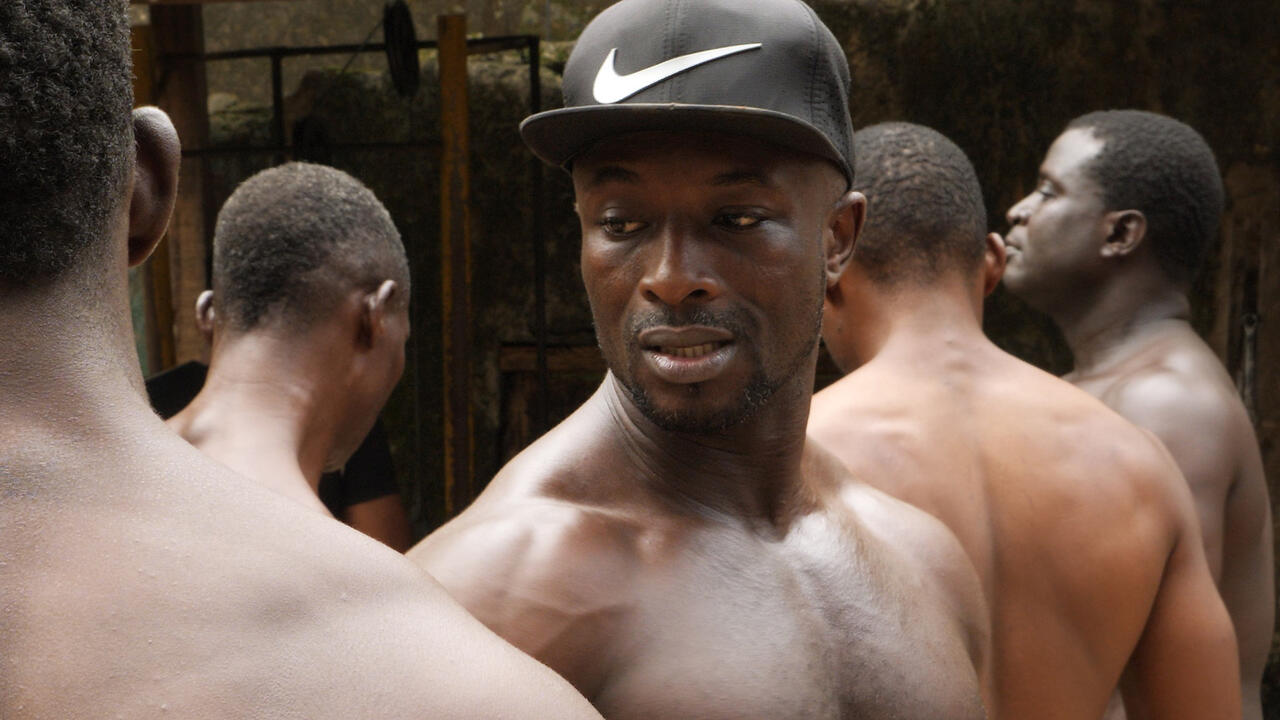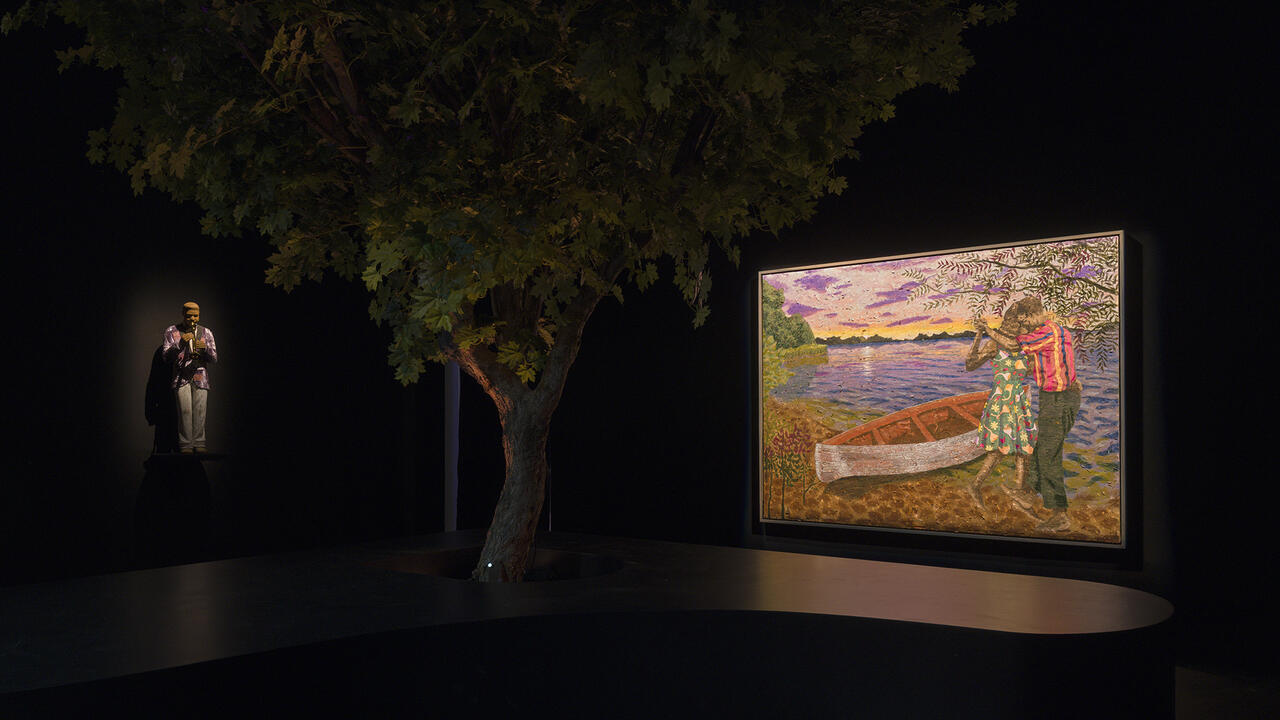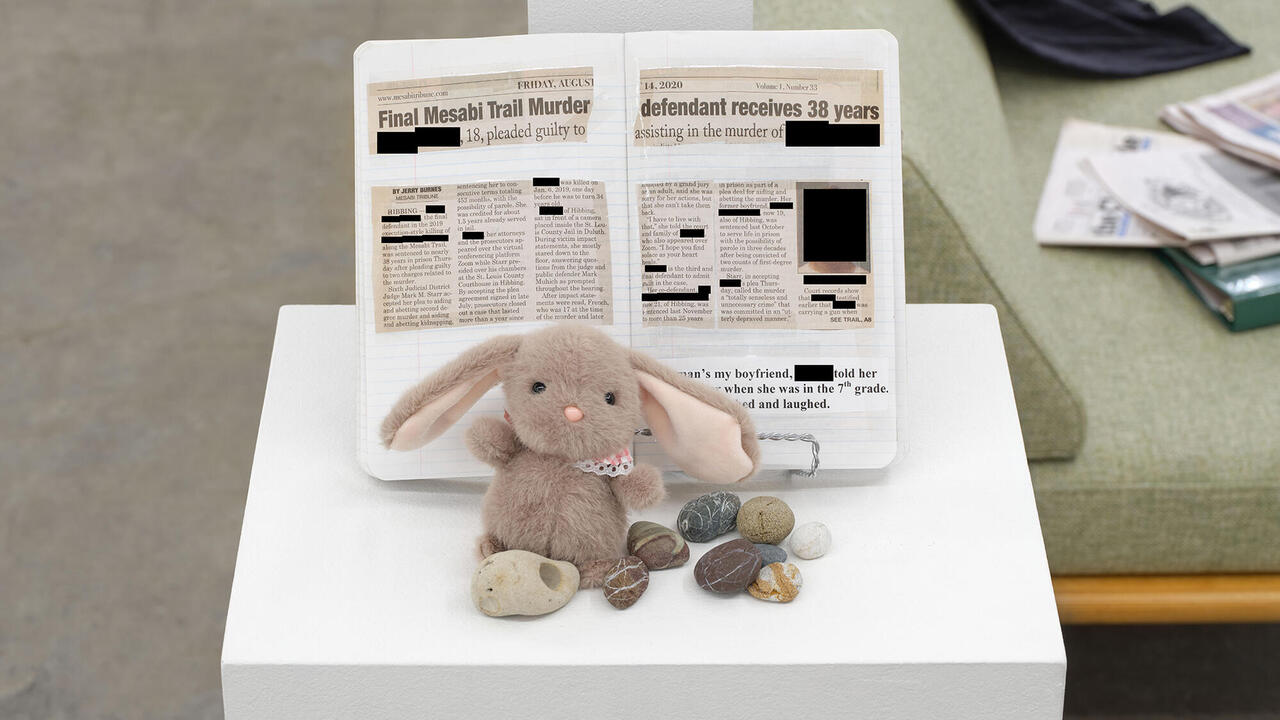Arcade Athletics and Eco-Feminist Mythology: the Exhibitions to See in Los Angeles
From Faith Wilding’s animistic deities to Pierre Guyotat’s orgiastic drawings, the frieze editors review their favourite shows in LA
From Faith Wilding’s animistic deities to Pierre Guyotat’s orgiastic drawings, the frieze editors review their favourite shows in LA


Ericka Beckman
19 January – 23 February
As with all team sports, victory is in controlling the game. Tension Building (2014-8), one of two videos by Ericka Beckman on view at Philip Martin, depicts American football players, cheerleaders and marching bands at the Harvard Stadium in Boston and the Stadio Artemio Franchi in Florence. Cutting filmed footage with stop motion animation of the stadia’s empty bleachers, Beckman not only accentuates the repetitive, near-military movements of the athletes, but also the cold, concentric circles of the architecture itself, which, like the coaches who prowl the touchline, dictate the otherwise free movement of bodies in space.
Captured in time-lapse photography and projected across two screens, Frame UP (2005) documents the 2005 expansion of the Walker Art Center in Minneapolis. Shot in Super 8, High 8 and VHS video, the video maps the movement of materials – thus workers, thus labour – across the construction yard, reimagining the museum-in-progress as a pinball machine, of sorts. Set to the familiar audial chaos of an amusement arcade and overlain with animated pinballs, the work once again piggybacks on the logic of gaming to visualise certain socio-political structures that remain unseen: we have the controllers and the controlled; the players and the played; the winners and those destined to lose every time.
Harry Thorne

Tony Cokes
Hannah Hoffman Gallery, Los Angeles
12 February – 15 March
‘It seems we are burying more and more of the old royalty these days,’ reads the text of Tony Cokes’s new video, The Queen is dead… (2019). Though the Queen of Soul, Aretha Franklin, passed away six months ago, she was recently joined by the King of Fashion, Karl Lagerfeld. There was a time when Trump was blamed for celebrity deaths, as though our horrific fate had put these eminences prematurely in their graves. (David Bowie, Prince, Carrie Fisher, George Michael all died in 2016, the year of his rise.) But the body expires when it wants to: Franklin had weathered worse. Cokes’s signature slides of flashing text tell the story of Franklin’s political activism – her support for Martin Luther King, Jr.; the Black Panther Party; voting rights and prison reform – to a steady gospel beat. White type swims against a field of shimmering leaves, which feels cheeky, given that the screen on which it is projected sits outside, against a pair of glass patio doors.
Last year, Hannah Hoffman closed her white cube gallery on Highland Avenue and moved into a modernist house in LA’s Mid-City neighbourhood, which the architect Paul Revere Williams designed and lived in until his death in 1980. Williams was the first prominent black architect in the US; he completed over 2500 homes in California and the largest municipal buildings in downtown LA. The Will & The Way (2019) reflects on his legacy, with quotes that acknowledge the racism he faced. In one memorable anecdote, Williams recalls learning to sketch upside-down, so he could sit on the opposite side of a desk rather than risk making white clients uncomfortable.
Cokes’s methods are deceptively simple: the PowerPoint presentation or old TV interlude. Within this limited set, scale and speed are powerful tools that focus our attention just where he wants it. In the spirit of his Mikrohaus, or the black atlantic? (2006-8), a highlight of last year’s Berlin Biennale, Cokes considers the black pioneers excluded from official history. His writing is a welcome revisionist step.
Evan Moffitt

Pierre Guyotat and Christophe von Weyhe, ‘Scenes and Stages’
2 February – 30 March
German painter Christophe von Weyhe and French novelist Pierre Guyotat appear to have little in common, except, as the press release asserts, in their mutual interest in ‘time and theatricality’. Their works – presented in the two-person show ‘Scenes and Stages’, curated by Donatien Grau – are not intermixed, but appear separately throughout The Box, from its sweeping front rooms to its cozier ones in the back. Von Weyhe’s large paintings capture the moody industrialism of the Port of Hamburg, which he has been painting for 40 years, while Guyotat’s drawings depict men and women copulating and self-pleasuring, sometimes in the presence of curious dogs. I was most struck by Guyotat, whose drawings offer a surprising charm and levity, given the extremities of his fiction. His writing often delves into the oozing, wounded depths of gay desire, where the body submits to pleasure only to be destroyed by it. At least in part; the thing is, you always seem to survive long enough for the next agonizing episode of hunger and want. In an introduction to the English edition of Coma, his 2006 book about a man who self-induces a comatose state through starvation, the novelist Gary Indiana writes that Guyotat’s ‘abjection is a desire for transcendence that necessarily constitutes a struggle against the body, against physiological need.’ Despite years of censorship of his work, his notion of sexuality isn’t ‘revolutionary’, though it is commonly said to be, so much as it is affirmative. What we see in these drawings are plump bodies in the midst of familiar pleasures, up to and including orgiastic fervour (oh, yes). They are pretty and competent. The absence of flourish makes these works so arresting. Women open their legs, men stand with pricks erect. Their faces and bodies are never so original as to distinguish them from one another. But that isn’t the point. Who hasn’t fallen in bed, or among men lying on the bathhouse floor, and found themselves in these exact position with these exact faces? That is, a blank: round head, two dots for eyes, open mouths. Ready, wanting. ‘Revolutionary’ indeed, as only the perfectly ordinary can sometimes be.
Andrew Durbin
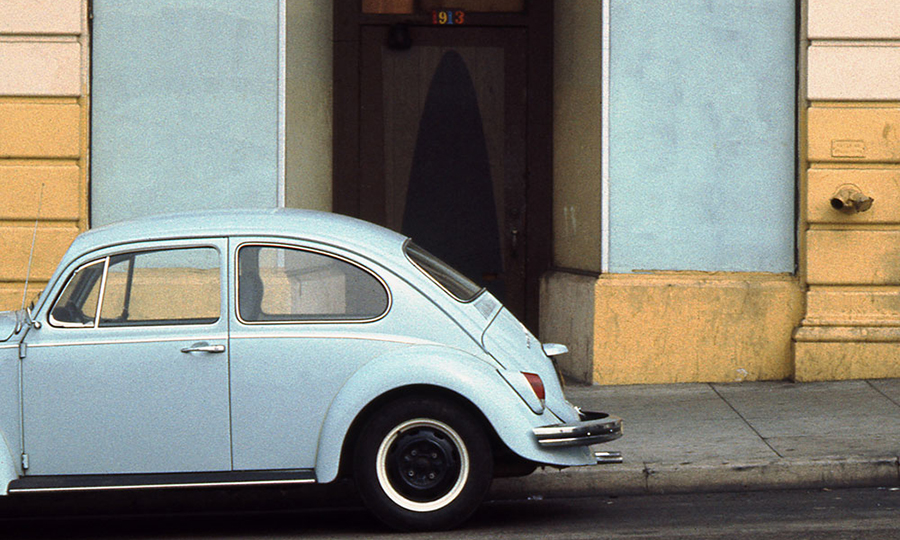
Allen Ruppersberg: Intellectual Property 1968 - 2018
10 February – 12 May, 2019
If you found yourself in downtown LA in 1969 and were hungry for ideas as opposed to calories, then Al’s Café was your kind of place: you could dine on, say, three rocks with a crumpled paper wad, along with a glass of beer. And if you returned to the city a couple of years later and needed somewhere to rest your head, where better to go than Al’s Grand Hotel (1971), a two-story house on Sunset, that had seven rooms including a ‘Jesus Room’ (complete with crucifixion) and an ‘Al’s Room’ (a sort of self-portrait)? The proprietor of both of these establishments was, of course, the artist Allen Ruppersberg, whose first major survey show in 30 years was organized by the Walker Art Center and is now on view at the Hammer Museum. To say that his work is like a celebration of the everyday is like saying that Picasso was sort of fond of paint.
Born in Cleveland, Ohio, Ruppersberg came to Los Angeles in 1962 to study at what is now CalArts. He soon gained renown as one of the city’s best and most light-hearted conceptual artists – if, by conceptual, you mean looking at life, mingling it with art, and then sitting back to bask in the glow of it all. He is an artist to whom hierarchies of value are meaningless: he’s as interested in poems and magic as he is in jigsaws and driving; in laughter as much as serious contemplation; in so-called arthouse film as he is in popular music; in posters and postcards and serious novels as much as images. Who else could make an artwork – and a really compelling one, at that – about asking for, and being told, road directions? In his 1984 text, Fifty Helpful Hints on the Art of the Everyday, Ruppersberg declared: ‘Reality only needs a slight adjustment to make it art’. He wasn’t kidding.
Jennifer Higgie

Faith Wilding, ‘Scriptorium Revisited’
9 February – 9 March
Saint Hildegard of Bingen observed ‘the shade of the living light’ at the tender age of three. By five, she was having divine visions. Hildegard, a 12th century German abbess, writer, mystic, philosopher, botanist and cultural practitioner, occupies a central position in Faith Wilding’s exhibition ‘Scriptorium Revisited’, which the West Coast artist and activist sees as the induction of Hildegard’s scripture into an ‘eco-feminist mythology’. The mythology is told, chiefly, through watercolour: tentacle-like protrusions intertwine to form hazy, new age bouquets; animistic deities with spider-webbed wings extend their curling, reptilian tails; beams of light intersect with sturdy tree trunks to form shrines to ruling mystics who remain unseen. Two gouache and watercolour paintings, Pages from the Scriptorium (Black Dog) and Pages from the Scriptorium (Blue Bird) (both 1985), depict naked bodies being consumed by their titular beasts, as death heralds rebirth in the great tale of infinite existence.
In a contemporary age defined by its digitalism, its hyper-acceleration, its cohabitation with its own future, a reinvestment in mysticism and lore of the old kind makes a curious type of sense. As we liberate ourselves from our physicality, floating our clunky bodies up into the baffling non-place of the cloud, we recommit to a once-debunked myth: that meaning can exist beyond the cold, hard edges of our own forms; that in looking out, not in, we might once again discern the shade of the living light.
Harry Thorne

Robert Wilhite
6 January – 19 February
Dal cucchiaio alla citta (from the teaspoon to the city) runs the modernist formula – most often attributed to Ernesto Rogers – for ‘total’ design, the architectural Gesamkunstwerk. In other words, where some see stools, others see skyscrapers (and vice-versa); or, the art of the smallest daily details should not be overlooked. At one extreme, this mantra edges uncomfortably towards a kind of architectural patricianism while, at the other, it dissolves into light-touch dilettantism. However, there is a rich tradition – reaching back, via the Bauhaus, to the Weiner Werstätte and beyond – of artists testing their mettle (bad pun intended) by designing flatware.
‘Robert Wilhite: Art and Design’, a concise but multifaceted exhibition of works by the LA-based artist at As Is, opens with a display case of flatware designed in the 1980s and sold commercially in the ’90s. (A wormhole-like binder of archival clippings on the gallery’s mezzanine shows them to have been distributed through such culturally-savvy outlets such as the MoMA store). The surrounding walls are hung with a grid of simply framed, postcard-sized pencil drawings of the implements, frontally and in elevation, with precisely noted measurements, as in architectural studies. One of the first students at UC Irvine, in the mid-1960s, Wilhite studied fine art with artists such as Larry Bell, Robert Irwin and Ed Moses; however, as the furniture, theatre props and Tatlin’s Tower-esque installations in the gallery’s main space indicate, his is a body of work that is hard to pin down. Many of the objects here were made for use in plays staged by the late Guy de Cointet, with whom Wilhite collaborated frequently until the former’s death in 1983. Amongst them are three gongs – flat geometric forms made from different metals hang – and a series of painted chairs. With their impossibly angled perches, they remind us that artists, liberated from functionalism, need be slaves neither to cucchiaio nor città.
Amy Sherlock
Main Image: Tony Cokes, ‘Della’s House’, 2019, installation view. Courtesy: the artist and Hannah Hoffman, Los Angeles








